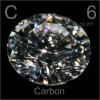Search the Community
Showing results for tags 'singapore'.
-
Starting a thread to consolidate the sharing of SIM-only plan experiences and lobangs. Still 1 month+ left on my current M1 SIM-only contract and looking at what other players (telco and MVNO) are offering. Came across Zero1's 6u plan which seems pretty competitive, so putting this plan on my radar screen.
-
I'm beginning this thread so I can continue to discuss matters on a topic that interests me. I know there is a thread with similar content, but it's become a bit toxic, so if the mods don't mind, I'll start one here? Otherwise go ahead and merge. Basically we have an economic crisis on us, and internationally things are not doing well either. But in spite of this, property prices seem to be headed northwards and the agents will want to tell you, they won't drop. But job losses are on the way, and the capital appreciation on property isn't what it used to be and despite what agents try to tout, one must consider all factors rationally, and see if your money is better served elsewhere. Eg a good benchmark will be the 2.5% that CPF offers. But property remains enticing because it takes a lot more effort and investigation to find alternatives and not all Singaporeans are that hardworking or familiar with the investment instruments available. I wonder what the rest think? Cheers
-
Has anybody feel that yesterday(Mon 8-Dec-2008) was indeed very cold? From my flat i have to wear sweater in the morning, i am jsut wondering whether it was below the official announced 24 deg C, anyone felt the same?
-
SINGAPORE – High certificate of entitlement prices are not quelling motor dealers’ appetite to grow their portfolios. Premium Automobiles, the retail dealer for Audi, has just been appointed the distributor for Zeekr, a luxury electric vehicle (EV) brand from Chinese automotive giant Geely. The agreement was signed in late December. The showroom for the brand will be built in the Leng Kee Road area in the first half of the year, Premium Automobiles said in a statement sent to The Straits Times late on Dec 28. The service facility will be in the Ubi industrial area. When asked, Premium Automobiles said the details are still being finalised for their exact locations, but added that these will be dedicated facilities that will not be shared with Audi cars, which the company will continue to sell. Zeekr will be launched here with two models – 009, which is a multipurpose vehicle (MPV), and X, a sports utility vehicle (SUV). Deliveries will begin in the third quarter of 2024. The 009 MPV is over 5.2m long, which makes the six-seater bigger than the latest generation Toyota Alphard, which measures just under 5m. Premium Automobiles did not confirm the exact specifications of the models, but the 009 MPV has a promised range of 800km on a full charge. Its dual motor set-up offers maximum power of 400 kilowatts, enabling it to sprint from 0kmh to 100kmh in 4.5 seconds, and making it the world’s fastest MPV. The X SUV is about the same size as the Nissan Qashqai at 4.4m long. Two versions are offered in the other markets where Zeekr is already operating. One has a 200kW motor that powers the rear wheels and boasts a range of up to 440km and the other is a zippier 315kW dual-motor all-wheel-drive version that can cover 400km on a single charge. Singapore, Hong Kong and Macau will be the first places where Zeekr right-hand drive cars are available. https://www.straitstimes.com/singapore/transport/chinese-ev-maker-zeekr-s-cars-to-be-sold-in-singapore-with-deliveries-from-q3-2024
-
hi all started this new thread for perodua owners in s'pore. can share tips on modi, spare parts n accessories, etc.
-
Personally, the mindset of the national is if it is FREE we will keep it hence, i dont envisage a possible reduction in our NS duration what i am very worried about is the world is moving so very fast we already had been disadvantaged by NS, resulting in being 2 or 2 1/2 years behind our girls and our foreign classmates in the future it will be worse for our children even 6 months can mean a break or score the economic cycle also is shorter hence, i am just worried about our children am i worrying too much for our kids or should i just relax TAIPEI
-
Whether donating money or doing volunteer work. Just a simple question. Don't read too much into it.
-
lai liao 😁 @ https://www.techinasia.com/source-tesla-nears-final-approval-sell-cars-singapore
-
Source: https://mustsharenews.com/singapore-nuclear-energy-2050/ Singapore Could Potentially Use Nuclear Energy By 2050 When the topic of nuclear energy gets brought up, some might instinctively think of the dangers associated with the alternate energy source. However, nuclear energy can also be an efficient power source. On Tuesday (22 Mar), the Energy 2050 Committee published a report showing that Singapore could tap into nuclear energy in the coming decades. With recent advancements, nuclear technology has apparently become safer and more reliable. However, more research and development are needed to determine if it’s indeed viable for Singapore. Nuclear energy could supply 10% of Singapore’s needs by 2050 According to The Straits Times (ST), a report commissioned by the Energy Market Authority (EMA) concluded that about 10% of Singapore’s energy demand could be supplied by nuclear energy by 2050. While Singaporeans might understandably be worried about nuclear energy, the Energy 2050 Committee said advancements in the field have made the alternative power source safer than before. The report projected 3 uncertain geopolitical scenarios in 2050: Clean Energy Renaissance Climate Action Bloc Emergent Technology Trailblazer S’pore can determine if nuclear energy is viable by 2040s In the 3rd scenario, the world is fragmented and technology advancements will delay but eventually arrive. Singapore will be able to deploy low-carbon alternatives, such as nuclear energy, into its energy mix. The report stated that a fragmented geopolitical situation means that countries would find it harder to collaborate and achieve their climate targets. This would limit electricity imports in Singapore’s energy mix. This is as opposed to the other 2 scenarios, where electricity imports would contribute a significant portion of Singapore’s energy needs. Scenario 1: Clean Energy Renaissance Scenario 2: Climate Action Bloc Nevertheless, in all 3 scenarios, electricity imports, hydrogen, solar, and energy storage systems will be important. The Straits Times (ST) reported that in 2014, Singapore allocated $63 million to fund research and education in nuclear safety, engineering, and science. By the 2040s, Singapore would likely be able to determine if nuclear energy is viable. If so, we can start developing domestic generation capacities. Could contribute greatly to our climate efforts Once associated with danger and volatility, we are glad that modern developments have made nuclear energy much safer and hopefully more viable. While it might sound ambitious for Singapore to incorporate nuclear energy, it could contribute greatly to our nation’s climate efforts.
-
I am thinking about this, about what kind of people and society we want here in Singapore. The truth is, the current world situation now is quite difficult and unpredictable. And unfortunately bad things can happen when you don't expect it, sometimes even with the best of planning. So, when bad things happen, whether individually or collectively as a country, should those in a position to help, reach out to help? Or is it every person for themselves, you die your problem?
-
I feel like there's a lot of negativity around here in the past 1-2 years or so. Come, let it all out here. What is making you all so upset/angry/dulan?
-
Hey guys, any1 knows which marathon is in Feb - April 2011 which has the 10km distance? Cos i planning to train for marathon but i dun wan to go straight for the 42km, i prefer to gradually increase the distance..so im hoping to run 10km beginning of next yr..den 21km at adidas sundown in May..den eventually the StanChart 42km in Dec next yr. Any advice? Thanx in advance.
-
I decided to create a separate thread for AI. Things are really rapidly changing. AI to replace sales staff that are in a revolving door situation. Seems like this company has hit upon a niche that larger companies are very interested in. Not all of these ideas will work out. But you can bet a significant portion of desk/admin jobs will slowly be redundant over the next 10-15 years. Maybe by then, some of us would be working alongside AIs to do some of the routine tasks. https://techcrunch.com/2017/04/09/saleswhale-seed-funding/
- 139 replies
-
- 2
-

-
- artificial intelligence
- singapore
-
(and 3 more)
Tagged with:
-
https://www.straitstimes.com/singapore/more-spending-on-healthcare-does-not-mean-a-healthier-population-ong-ye-kung SINGAPORE - The Republic’s healthcare challenge in the coming years is not spending more, but to ensure that Singapore does not go the way of many OECD countries where healthcare costs are “spiralling and escalating out of control”, Health Minister Ong Ye Kung told Parliament on Wednesday. Better health outcomes can be achieved by continuing with Singapore’s sensible and practical approach of having different layers of safety nets – subsidies, MediShield Life, MediSave and MediFund – and combining it with the Healthier SG strategy to reduce the sickness and disease burden even as the population ages, he added. Mr Ong was responding to Progress Singapore Party (PSP) Non-Constituency MP Leong Mun Wai’s assertion on Tuesday that the Government has not spent enough to cover Singaporeans’ healthcare costs, and should be spending more to help with medical bills. Mr Leong had cited data to show that the Government’s share of healthcare expenditure is lower than the average among Organisation for Economic Cooperation and Development (OECD) countries. The majority of the 38 OECD members are regarded as developed countries. Mr Ong noted that it is widely accepted by health economists that spending more on healthcare does not mean better outcomes. For instance, the United States and Britain spend about 17 per cent and 10 per cent of their gross domestic product on healthcare respectively, compared with Singapore’s 4 per cent. Despite this, both those countries are facing a high incidence of chronic illnesses and high obesity rates, and expected lifespans there are lower than in Singapore, he said. Conversely, Singapore has delivered good outcomes given how much it is spending, while keeping healthcare affordable for the middle- and lower-income groups, Mr Ong added. Seven in 10 Singaporeans in subsidised hospital wards do not pay any out-of-pocket expenses, and nine in 10 pay less than $500 in cash. “So when Mr Leong asked the Government to spend more to lower out-of-pocket expenses further, he really meant to channel resources to unsubsidised patients, that is, those staying in A class wards or private hospitals,” he said. “This is where the big bucks and big expenditure are, and it will push our healthcare expenditure and spending to the levels of OECD countries.” Mr Leong also failed to mention that such spending ultimately has to be raised from the people through taxes, and made no mention of where PSP will get the funding from, Mr Ong added. The reality is that government healthcare spending has already been rising, having tripled between 2011 and 2020, and is expected to triple again between 2021 and 2030, said Mr Ong. Mr Leong had also called for increased spending from the Pioneer Generation (PG) and Merdeka Generation funds, as he felt that spending from those funds has been small relative to their total assets. This understanding is misplaced as both funds were sized based on the projected lifetime cost of the benefits, said Mr Ong. He noted that PG members are as young as 74 and “still have quite a bit of runway ahead of them”, though the Government will continue to review the adequacy of both funds. The Health Minister also responded to Workers’ Party MP Jamus Lim’s suggestion that Singapore’s medical infrastructure is too lean, and that the current hospital bed crunch speaks to a need to relook healthcare capacity. Mr Ong said every country is facing a similar crunch post-Covid-19, including the OECD countries despite their higher bed-to-population ratio. The reason for the bed crunch here is that the average length of hospital stay has increased by 15 per cent compared with before the pandemic, he said. This is likely a result of more older people falling ill due to an “immunity debt” as safe management measures were lifted, a problem exacerbated by poorer health from social isolation amid Covid-19. Singapore is catching up on healthcare capacity as projects delayed by Covid-19 – such as the Tan Tock Seng Hospital Integrated Care Hub and Woodlands integrated health campus – are now being completed, said Mr Ong. More transitional care facilities will also be set up to offer rehabilitative care for more stable senior patients. Closing the debate on the motion to support healthcare here beyond the pandemic, Nominated MP Tan Yia Swam responded to Mr Leong’s charge that drug prices were “marked up unreasonably for non-subsidised patients” in order to cross-subsidise others. Dr Tan, who is a breast surgeon, asked if Mr Leong had evidence that this was happening, and noted that non-subsidised patients are those who opt for an A-class or B1-class ward, or foreigners. “I, as a doctor, would think that allowing market forces to determine costings is fair, or would Mr Leong also want taxpayers to pay for everyone?” she asked. Mr Leong said he had heard “feedback from residents (that) they pay different prices when in different classes”, and that while it is understandable for services to be priced differently based on ward class, this should not be the case for drugs. The NCMP had earlier called on the Government to centralise drug procurement across public and private medical institutions, as doing so would reduce the cost of medicine. In response, Mr Ong said Singapore deliberately chose to have a variegated market for healthcare, with private-sector doctors having different business models. For instance, some private doctors charge very low consultation fees but make a margin on the drugs they sell, while others do the reverse, he said. “Sometimes you want to let market forces operate, but at the same time have some discipline through... what we subsidise and what we don’t, and I think that’s how we rein in unnecessary healthcare costs,” said Mr Ong.
- 21 replies
-
- 4
-

-
- healthcare
- spending
-
(and 5 more)
Tagged with:
-
VW Singapore plots Skoda comeback Volkswagen-owned Czech brand Skoda is making a comeback, yet again. But this time, it is parent group Volkswagen which will do its own importing and retailing here. Volkswagen Group Singapore - the manufacturer-owned importer and retailer of Volkswagen vehicles here - has registered a new company for this purpose. According to the Accounting and Corporate Regulatory Authority, Skoda Centre Singapore was registered last month and will be operating out of 247 Alexandra Road, which is the same address as the VW showroom. The Straits Times understands renovations are being carried out at the facility and that Skoda Centre Singapore will start operations in the first quarter of next year. Volkswagen Group Singapore was not available for comment, but it is understood that a meaningful price differential will be in place to re-launch the Czech brand here. Previously, Skoda cars - which are based on Volkswagens - were the same price or even costlier than equivalent VW models. In other markets, Skodas are cheaper. The brand was last represented by Harvest Automobiles, part of businessman Peter Kwee's now dormant motor group of companies. Harvest Automobiles went bust in 2013 - the third Skoda agency to have failed in Singapore. The Straits Times understands Vertex Automobiles, the dealer for Chinese automobile brand Chery that is owned by egg trader Lian Fong, had made a pitch for the Skoda franchise. But it has since landed Seat, a Spanish brand also owned by Volkswagen Group. Skoda had also been courting Trans Eurokars, a multi-franchise group owned by businessman Karsono Kwee. Among its brands are Rolls-Royce, Porsche, Mini and Mazda. The best year for the Skoda brand here was 2010, when it sold 105 cars. That is less than 4 per cent of Volkswagen sales last year. Will the brand have better success under Volkswagen? Nanyang Business School's Adjunct Associate Professor Zafar Momin, previously an automotive expert with the Boston Consulting Group, said: "Skoda may be able to make a comeback in Singapore if priced and promoted properly. It needs to be very competitive with its Korean competitors in terms of pricing, as it could provide solid, competitive products targeted at value segments of the markets. "With VW Singapore now doing it themselves, it has a better chance than before. Having said that, I wonder what "comeback" really means in a small crowded Singapore car market which has small volumes for many non-mainstream brands. Would it really be worth the effort and to what extent would it cannibalise VW products?" When contacted back in 2014 - when Harvest Automobiles relinquished the business - Volkswagen Group Singapore said it had no plans to take over the Skoda retail business here. It has, however, taken over the maintenance and warranty of Skodas here. There are about 400 Skoda cars in Singapore today. As a onwer of both Skoda and VW model, I can attest that Skoda is indeed better, in almost every aspect, than VW. I can wait to welcome it back to Singapore!! Here are some interesting models in current Skoda lineup, that I hope can be made available to local motorist when sales start next year. Superb Superb Combi Kodiaq
-
https://www.9news.com.au/national/defence-forces-training-ten-taken-to-hospital-after-incident-at-queensland-military-training-base/f919a5c8-f29c-4d48-8d10-4655c72e3119 Still not out in SG media 😅
-
Heh, similar situation here too but our authority may be too busy with the in-depth monitoring until no time to take actions in protecting our consumers. Or was the price increases due to many other factors, which make it very complicated, requiring many man-YEARS to calculate? Hahahaha I used to point out some of the offer advertisement to the respective supermarket, where was price was lower than the offer price, and the standard answer are either "Sorry, it is a typo", "The price actually increase quite sometime ago and now it is on offer, so a good time to stock up", etc. Australia supermarkets Coles, Woolworths sued by regulator for misleading discounts Source: https://www.straitstimes.com/business/coles-woolworths-sued-by-regulator-for-misleading-discounts SYDNEY – Coles Group and Woolworths Group, Australia’s two biggest supermarket chains, have been sued by the country’s competition regulator over claims they misled shoppers over discounting claims on hundreds of common products. The Australian Competition and Consumer Commission (ACCC) alleged the companies briefly inflated prices on popular items such as Coca-Cola, Tim Tams biscuits and Colgate toothpaste before reducing them to the same or slightly higher than the original price. “The discounts were, in fact, illusory,” ACCC chairwoman Gina Cass-Gottlieb said in a statement on Sept 23. “Many consumers rely on discounts to help their grocery budgets stretch further, particularly during this time of cost-of-living pressures. It is critical that Australian consumers are able to rely on the accuracy of pricing and discount claims,” she said. Australia has one of the world’s most concentrated supermarket sectors, with Woolworths and Coles controlling just over half of the market, according to Bloomberg Intelligence. Both chains have come under political fire during the cost-of-living pressures sparked by stubbornly high inflation, with the government in June introducing larger fines for anti-competitive behaviour. “These are serious allegations that the ACCC is bringing before the courts,” Australian Prime Minister Anthony Albanese said on Sept 23. “If this is found to be true, it’s completely unacceptable. Customers don’t deserve to be treated as fools by the supermarkets.” The ACCC has been taking a tougher stance on protecting Australian consumers, who must contend with duopolies or oligopolies in many industries, including air travel, banking and telecommunications. The competition regulator alleges Woolworths made false or misleading representations about the prices of 266 products between September 2021 and May 2023, while Coles made false or misleading representations about the prices of 245 goods during February 2022 and May 2023. Ms Cass-Gottlieb said the allegations were “very serious”, and that the ACCC is worried both about the harm to consumers and the harm to competition by fake discounts. The allegations come as the ACCC undertakes a broader analysis of the supermarket sector. Ms Cass-Gottlieb added that the commission is looking in depth at competition, cost, pricing and margins. “We encourage genuine discounts – they matter to consumers,” she told reporters on Sept 23. “But they need to be genuine.” In one example cited, from at least Jan 1, 2021, until Nov 27, 2022, Woolworths offered Oreo Family Pack Original cookies for for a regular price of A$3.50 for at least 696 days. On Nov 28, 2022, the price was increased to A$5 for 22 days. On Dec 20, 2022, the cookies were placed on a “Prices Dropped” promotion at a new price of A$4.50 and a “was” price of A$5. The “Prices Dropped” price of A$4.50 was in fact 29 per cent higher than the previous regular price, the regulator said. The regulator also alleged that in many cases both companies “had already planned to later place the products on a ‘Prices Dropped’... promotion before the price spike, and implemented the temporary price spike for the purpose of establishing a higher ‘was’ price”, Ms Cass-Gottlieb said. BLOOMBERG
- 39 replies
-
- 12
-

-
.png)
-
- case
- misleading
-
(and 6 more)
Tagged with:
-

Singapore will qualify for world cup in 20340.........
alfakidz85 posted a topic in Football Channel
Singapore returned to World Cup and Asian Cup qualifying action after more than 18 months on Thursday (Jun 3) with a 4-0 loss to Palestine. The second round of joint qualification for the 2022 FIFA World Cup in Qatar and the 2023 AFC Asian Cup in China has resumed after a lengthy delay caused by the ongoing COVID-19 pandemic. Palestine raced to a three-nil lead in the first half at the King Fahd International Stadium, prompting Singapore head coach Tatsuma Yoshida to make a double substitution at the break. But he admitted his match decisions had not gone the way he wanted. “The boys tried, but in the first half, they were a bit nervous,” he said after the match. “I am really disappointed (as) they can do more (and) that we could not show our full potential. I think if we played to our potential, maybe the result would be changed … I am very sorry for the Singapore fans. “I feel big disappointment, big pain … But it’s not on (the players). It’s because of my management and it’s on me.” The three goals Palestine were scored in a span of about 10 minutes and included two penalties by Tamer Seyam either side of an Oday Dabbagh strike. Yaser Hamed completed the scoresheet in the closing minutes of the game. The result means Palestine overtake Singapore in the Group D standings on goal difference, having played a game more. The match saw the international debuts of Ilhan Fandi and Saifullah Akbar, while Lions stalwart Baihakki Khaizan notched his 138th Singapore appearance, taking him to joint second on the country’s list of most-capped players. The Lions sit fourth out of five teams in Group D after six games. Their remaining ties in the group are against Uzbekistan on Jun 7 (kick-off at 2am on Jun 8, Singapore time) and Saudi Arabia on Jun 11 (kick-off at 2am on Jun 12, Singapore time). Saudi Arabia lead Group D on 11 points with Uzbekistan in second on nine. The sides have played five games apiece. All remaining Group D matches are being played in the Saudi capital. The top team of each of the eight second-round groups and the four best runners-up will progress to the third round of 2022 World Cup qualifying. They will also qualify for the 2023 Asian Cup. The remaining teams will continue to compete for places at the 2023 Asian Cup in subsequent rounds of qualifiers. Singapore kicked off their campaign for Qatar 2022 and China 2023 in September 2019, picking up seven points from five games before qualifying was disrupted by the COVID-19 pandemic. Elsewhere in Asian qualifying on Thursday, the United Arab Emirates beat Malaysia 4-0, Australia won 3-0 against Kuwait and Iran picked up a 3-1 victory over Hong Kong. Bahrain drubbed Cambodia 8-0 and Nepal beat Taiwan 2-0 while Qatar, who have already qualified for the 2022 World Cup as hosts, edged out India 1-0. Thailand and Indonesia played out a 2-2 draw, with Bangladesh and Afghanistan also sharing the points in a tie that finished 1-1. -
On a recent episode of a podcast, Singapore came up once again (it’s a British podcast, and probably my favourite podcast), and the associated statistic was… notable. Here it is: According to a Gallup poll in 2012, Singapore was ranked the least emotional country in the world. First sentence of the associated Gallup news article: “Singaporeans are the least likely in the world to report experiencing emotions of any kind on a daily basis.” And, this… honestly feels quite true. It’s at least not surprising or outlandish. It’s worth noting the methodology to the study: Interviews with individuals who answer yes/no to questions that ask about either positive or negative emotions. In subsequent studies by Gallup, they’ve instead recategorised results into a Positive Experience Index and Negative Experience Index – it is probably a more relevant reflection of societal happiness/unhappiness. (You can find the report here.) But back to the original survey, and the original point: Are Singaporeans really emotionless, and why? Some analysts chalk this up to a culture of high productivity and high discipline – which explains us being one of the highest GDP per capita countries in the world (meaning richest). And there’s a good amount of truth to that. With a society built around productivity, even from young with a highly competitive and results-driven education system that arguably favours a stoic approach to life, Singaporeans can be characterised as robots (highly effective, highly efficient ones). And while I am clearly no anthropologist, I think most Singaporeans will recognise and probably agree with this assessment. It might be a tad too harsh to call us emotionally suppressed, and I don’t think emotionality is naturally counter-productive to work efficiency, but I do think that many Singaporeans perceive overt emotionality as being a less ideal state of efficiency. (It’s probably also somewhat indicative that the other countries ranked after Singapore - Georgia, Lithuania, Russia, Ukraine, Belarus and Kazakhstan - are all ex-Soviet states that may be stereotypically characterised as unemotional and workman-like.) However, economic factors cannot be the only explanation. In fact, Singapore is something of an outlier in the data sets, where more wealthy countries tend to rank higher on emotionality. I also wonder if a part of it is our ability to recognise and articulate emotions – and whether there are more cultural explanations. I come back to a phrase that I hear often (and am guilty of using often, too): “Ok lor.” While it might be a fairly generic uttering, I do think there’s something implicitly Singaporean about that attitude – instead of recognising and reconciling our present emotions, we instead consciously or subconsciously choose not to acknowledge it, or any emotion at all. And there’s cultural explanations for this: Think about our upbringing, and especially with the older generations where being outwardly emotional is not particularly encouraged. Instead of feeling the swings of happiness and sadness, instead we are encouraged to adopt a more neutral emotional state. And maybe as a result, we’re also less equipped to recognise varying emotions day-to-day, and to articulate them. Hence, ok lor. Like that lor. Sui bian lor. This grey blasé approach to life is maybe our armour, but I wonder if it’s then robbing us of richer, more colourful experiences. It’s arguably in no way a ‘bad’ societal condition, because it has to be evaluated across a spectrum, but that shouldn’t mean that we take our existing emotional state (or unemotional state) as a foregone conclusion. Is this the absolute cost of efficiency and productivity? If so, is this a cost worth paying? But perhaps more importantly, why should this be the cost to pay? And culturally, positive experiences appear to radiate out of Latin America, as well as some of our neighbouring countries (Malaysia and Thailand, especially). Perhaps we could learn some cultural lessons – just as a way of enriching our daily emotional lives and all the ups and downs that we will experience. There is value, I believe, in being more emotionally adept. Singapore doesn’t seem to appear in subsequent reports, though it’s also worth highlighting that Gallup has changed their reporting approach. We’re neither high nor low on negative experiences, but neither high nor low on positive experiences either. We’re likely decidedly mid, as the kids would say. “What Is the World's Emotional Temperature?” is how Gallup headlines its research, a grand question with interesting answers. And while clearly Singapore’s emotional temperature is decidedly tepid, it is perhaps worthwhile for us to individually ponder our personal emotional thermostat. And maybe, just maybe, we can figure out that we aren’t all just dead inside. ~ Desmond Photos from Unsplash
-
https://www.straitstimes.com/singapore/politics/founders-memorial-s-construction-set-to-cost-335-million why gov spend so much money on this? Is there public support for this, if not why is pap doing this if it hurts them???
-
A lot of illegal home breeders, just be careful https://www.straitstimes.com/singapore/couple-spent-over-60k-on-vet-bills-but-dog-died-anyway-and-they-had-to-sell-flat-to-settle-debt SINGAPORE – French bulldog Wangcai started life with a slew of chronic health issues. First-time dog owners Jackie See and Judyvein Cheng bought the male dog as a four-month-old puppy in 2018 for $4,800 from a local backyard breeder. Soon the married couple discovered Wangcai had mites, stomach issues, a yeast infection and rashes. “As first-time pet owners, we felt anxious and helpless. We kept going to the vet to find out what was wrong and constantly switched from premium kibbles to a hypoallergenic diet from the clinic. We spent between $2,000 and $3,000 (on the vet visits and food), but his condition did not improve,” Ms Cheng, an event organiser, told The Straits Times. Wangcai was also given cytopoint, an antibody used to treat atopic dermatitis, a chronic condition he was diagnosed with which causes dry, itchy and inflamed skin, but his condition worsened. “He was scratching more and that led to some open sores and bleeding every day. He also developed hives, redness in his groin, ‘armpit’ area and between his toes, rashes on his belly, fur loss and scabs and dandruff-like flakes,” Ms Cheng said. “We realised we were treating the symptoms, not going to the root of the skin issue. The medication was affecting his immune system, and realising what we had put our baby through, I cried,” she added. After the vet said that Wangcai had to go back once every two weeks for the cytopoint injection, which cost around $400 each, and would be on antihistamine for the next six months, she and her event emcee husband felt that Wangcai had had enough medication. They looked into changing his diet instead. After six months of trial and error, the couple settled on a diet that seemed to suit him. When Wangcai was around two years old, his health turned around – he stopped scratching incessantly and “became a normal dog”. And the couple was $10,000 poorer. “We went through 1½ years of craziness. It was a steep learning curve providing care to Wangcai. That was when we started researching and learning as much as we could about pet health, lifestyles, supplementation, nutrition and many other factors that would impact our pets’ quality of life,” Ms Cheng said, adding that it was also why the couple went on to open a holistic pet store. When Wangcai grew older, other health issues surfaced – he was found to have an enlarged prostate and joint issues. Animals like Wangcai that are sold by backyard breeders may cost less, but they often have birth or genetic defects and infectious diseases, according to experts. Animal welfare groups and the authorities have warned against buying pets from these breeders, as pet ownership here hit an all-time high and more illegal breeders are selling animals through online platforms such as Facebook groups and Telegram. According to a Euromonitor International report, the pet dog population in Singapore was around 114,000 in 2023, up by almost 3 per cent from 2019. The pet cat population hovers around 94,000 in 2024, a jump of almost 10 per cent from 2019. To deal with Wangcai’s enlarged prostate, Mr See and Ms Cheng tried herbal remedies instead of neutering him. Four to six months later, the prostate did not shrink, but it was not giving Wangcai any urinary problems, either. “To understand his joint issues, we sent him for an X-ray but the issues did not show up on the film. That was when we turned to chiropractic and swimming sessions for his joint problems. They provided relief but did not fix the problem,” Ms Cheng said. By then, Singapore was in the throes of the Covid-19 pandemic and the lockdown affected the entertainment industry. The couple were struggling financially but Wangcai’s health issues did not dissipate. “We had just started our holistic pet store... and were trying to make ends meet. (So) we held back on dealing with Wangcai’s health head-on. Till this day, I regret the decision,” Ms Cheng said, her voice breaking. “We could not keep doing MRI (magnetic resonance imaging) to monitor his joints. Each MRI cost $5,000 and we were strapped for cash,” she said. A young, active dog, Wangcai loved to jump, dash and lunge. One day, the behaviour led to a tear in his cranial cruciate ligament (CCL), a common cause of hind limb lameness and pain. The CCL tear spiralled into intervertebral disc disease (IVDD) – a common source of back pain in dogs. The condition is more common in French bulldogs and can cause excruciating pain, incontinence and paralysis in serious cases. “It happened overnight. He was walking funnily when we woke up in the morning. Jackie suspected it was IVDD and the only thing that could correct it was surgery,” Ms Cheng said. At the veterinary hospital they were referred to, Ms Cheng was told that the CT scan would cost $9,000 and the surgery alone $25,000. “My mind went blank. I took Wangcai home and started calling other animal hospitals to see if their charges were lower, much lower,” Ms Cheng said. That same night in December 2022, Wangcai’s pain became unbearable and he was thrashing about and went into seizures, making the situation worse. Ms Cheng took him to another hospital. Unfortunately, the surgeon’s schedule was full. “I practically begged him before he agreed to free up his appointments to help. Then came the financial crisis. There was not enough credit on my cards to pay for the surgery and the surgeon would not start unless a deposit had been made. Fortunately, a friend had accompanied me there and she forked out the difference,” she said. Wangcai was discharged from the animal hospital after the surgery, relieved of pain but paralysed. Four days later, things went south and Wangcai was rushed back to the hospital. “The team managed to stabilise him, but I noticed he was having difficulty breathing. In front of me, he suffered a seizure, and I was immediately pushed out of the room before the nurses called ‘code blue’ (which means a patient has gone into cardiac or respiratory arrest). The vet and nurses tried to resuscitate him for two to three minutes but Wangcai died,” Ms Cheng recalled. “Did we kill him by wanting the best for him? He went through so much pain in his short four years of life,” Ms Cheng said, sobbing from the memory. For all the treatments, the couple emptied their savings. Not only that, they also sold their Housing Board flat in August 2023 to clear the credit card loans they took for Wangcai’s medical bills. Not wanting to give up on Wangcai’s memory, they used some of the proceeds from the sale of the flat to continue their holistic pet food business “as part of Wangcai’s legacy and hopefully to help the pet community using alternative solutions”. The tragic experience did not stop the couple from loving another dog. After a year of grieving, they adopted another French bulldog on Christmas 2023 – Bean Bean, a former breeding dog from animal welfare group Voices for Animals. “Having been through the experience with Wangcai, we believe we will be able to care for Bean Bean better,” Ms Cheng said.
-
Fire breaks out at Singapore's Golden Mile Tower SINGAPORE: A fire broke out in Golden Mile Tower, an office and shopping complex along Beach Road, on Saturday (Aug 31). Photos and videos of the fire, which began to emerge online at around 1pm, showed thick, black smoke billowing from the upper floors of the side of the building facing Golden Mile Complex. In one photo, more than a dozen vehicles, all appearing to be of the same make, are engulfed in flames. The vehicles appear to be in a car park on the upper floors of the building. CNA has reached out to the Singapore Civil Defence Force for more information. Golden Mile Tower was built in the 1970s and currently houses a mix of restaurants, offices and the indie cinema The Projector. The building is also a terminal for buses to Malaysia and Thailand. Adjacent to Golden Mile Tower is the 300-room Hotel Traveltine and next to that is Golden Mile Complex, which is currently undergoing construction and restoration work.
-
Who say Singaporean can only be kiasu? They can be creative too! Hahahahaha How to beat a beeline Q like this? It is so simple, just use these! On Friday (23 Aug), the Facebook page for the Bishan community group, Bishan East Zone 1 Residents’ Network (RN), posted about an incident of people chope-ing queue spots with items at a food rescue event instead of physically queueing. The event took place at the Bishan East Zone 1 Green Hub, located at Block 112 Bishan Street 12. Food rescues are community events where unwanted food collected by volunteers is redistributed to residents. This serves to both reduce food wastage and give food to those who need it. According to their Facebook page, the Bishan East Zone 1 RN food rescue events are bring-your-own-bag and first-come-first-served. No reservations were allowed. The 23 Aug food rescue event had been a success, with “overwhelming support” from residents, many of whom got up early to queue for the event. “We appreciate the early bird zeal in queuing up for restocks in good orderliness & neighbourliness,” the Facebook post said. However, in the same Facebook post, the Bishan East Zone 1 Green Hub Food Rescue Team also noted that people were chope-ing spaces in the queue like they were at a hawker centre. To illustrate what had happened, they posted two photos. The first one showed a line of people queuing physically; this post was accompanied by a smiley face emoji sticker. On the other hand, second photo showed a queue of inanimate objects, mostly plastic bags, held down by stones from the nearby community garden. This one featured a shocked emoji sticker instead. The team acknowledged that the chope-ing was creative but prohibited. “All items found lying on the floor will be deemed as litter and cleared or confiscated,” the post warned. Coincidentally, the queue also started right next to a pillar with a “no littering” sign plastered on it.
-
https://sg.finance.yahoo.com/news/singapore-ranked-most-liveable-city-220000368.html Singapore has maintained its position as the most liveable city in Asia, according to global mobility specialist ECA International in its annual location rating report. "With excellent infrastructure and facilities, low crime rates and little exposure to socio-political tensions, Singapore remains a very attractive location for expatriates," says Mark Harrison, ECA general manager for Asia. "However, other regional locations have improved, and the gap between Singapore and other locations has fallen." ECA's Location Ratings evaluate cities worldwide to assess the overall quality of living for expats in over 500 locations across the globe. The ranking is based on various liveability factors, including availability of health services, housing and utilities, access to a social network, recreational and leisure facilities, infrastructure, climate, personal safety, socio-political tensions and air quality. Hong Kong's overall ranking has fallen in the last five years but remains in the top 10 most liveable Asian cities. Since 2022, Hong Kong's liveability has improved since the final Covid-19 restrictions were removed. In terms of liveability for Asian expatriates, Hong Kong has fallen over the past decade from 17th globally in 2013 to 77th in 2023. "Since political demonstrations in 2014 and protests in 2019, elements of our assessment related to socio-political tensions and freedom of expression have worsened," notes Harrison. "However, Hong Kong still has excellent facilities, infrastructure, recreational options and low crime rates and remains attractive relative to many other locations in the region." Hong Kong is behind Singapore, Japan and Busan in the Korean Republic in ECA's Asian rankings. "The intrinsic risk of disruption caused by typhoons, relatively high levels of pollution and difficulties in obtaining suitable accommodation are factors which count against Hong Kong compared to locations such as Singapore," adds Harrison. Despite facing challenges associated with natural disasters, Tokyo is the second most liveable city for Asian expatriates. Indeed, Tokyo has risen from the 9th spot in 2013 to become the second most liveable city in ECA's latest assessment. Over the past decade, mainland Chinese cities have climbed significantly in the rankings despite losing some of their momentum during the COVID-19 pandemic. "The zero-Covid policy and associated restrictions caused many Chinese cities to fall in our rankings for a couple of years," says Harrison. "But when we look at our current assessment compared to five or ten years ago, we can see that Chinese cities have risen notably in the rankings as living conditions have improved." Some aspects of life continue to be challenging for expatriates in mainland China, such as high levels of pollution, censorship, and suboptimal healthcare facilities. However, improvements in areas such as transport infrastructure and international schooling provision are the reason cities like Shenzhen (137th this year compared to 152nd ten years ago), Xi'an (163rd this year compared to 176th), and Wuhan (up from 160th to 145th) have improved in the rankings. Yangon in Myanmar is the location that has fluctuated most in the rankings over the past 10 years. Between 2013 and 2018, there was a significant improvement in its rankings (from 225th to 208th) following the reinstatement of civilian rule and strong economic growth. However, this progress was reversed when the military seized power again in 2021, and Yangon is now back down to 229th position, lower than it was 10 years ago. Elsewhere in Southeast Asia, there have been small but significant improvements in transport infrastructure, health services and recreational facilities in several locations. These cities have become more attractive to expats, for instance, Jakarta (which moved up from 213th to 196th spot), Phnom Penh (from 200th to 184th) and Hanoi (up from 160th to 144th). Outside of Asia, cities in New Zealand and Australia are the most liveable for Asian expatriates. Wellington and Adelaide are tied in second place alongside Tokyo. Eindhoven in the Netherlands is the highest-rated European city at 7th place, while Vancouver, Canada, has the highest ranking among cities in North America.
-
Education getting softer in Singapore and the GEP
noobcarbuyer replied to Wind30's topic in Lite & EZ
Revamping the GEP, after 40 years – What you need to know! https://www.kiasuparents.com/kiasu/article/revamping-the-gep Prime Minister Lawrence Wong announced, during the recent National Day Rally, that the Gifted Education Programme (GEP) will be discontinued in its current form, and instead is to be updated and expanded to benefit high-ability students in all Primary Schools. The main gist of the changes to the GEP would be: All Primary Schools will be equipped to identify high-ability learners and have their own school-based programmes to stretch these students in their areas of strengths and interests. Students no longer have to transfer to a school offering GEP and can continue in their current schools with their friends. Students who excel in particular subjects can attend after-school enrichment modules, about once a week, at nearby schools with their peers.ldren can mix around and feel at home with other intellectually gifted children. READ MORE : https://www.kiasuparents.com/kiasu/article/revamping-the-gep














